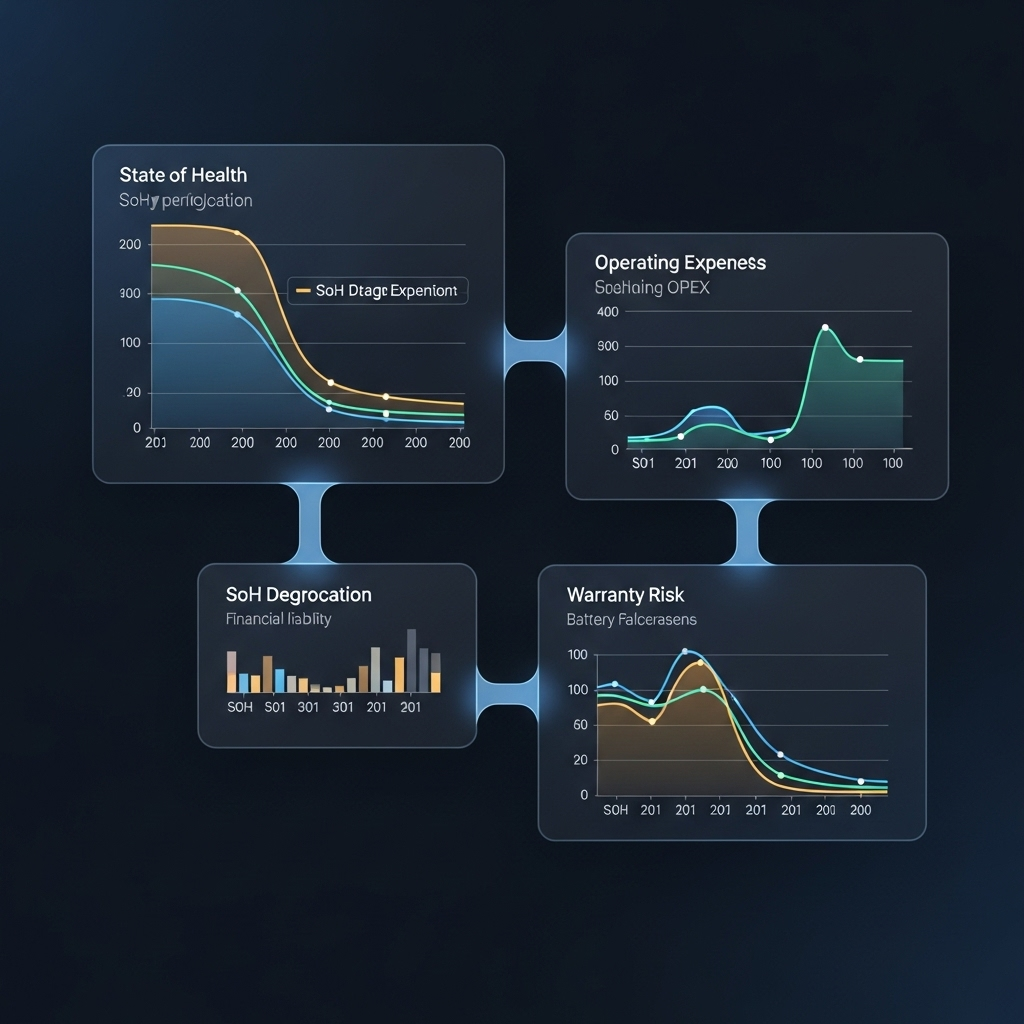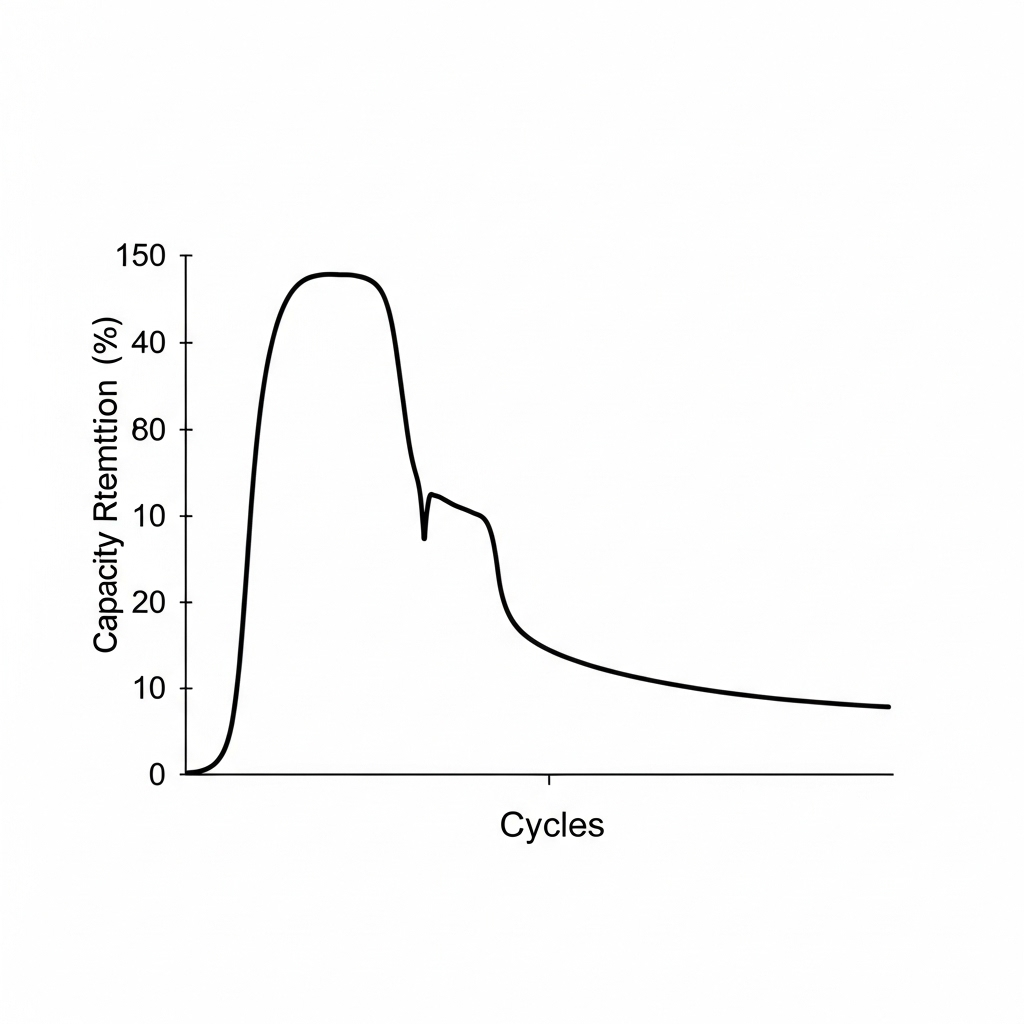Smart charging is often presented as a key feature for modern energy storage systems (ESS) and electric vehicles (EVs). The promise is simple: a more intelligent way to charge your batteries. But does it actually help them last longer? Or is it just a feature with more hype than substance? The answer lies in the science of battery degradation. By managing how and when a battery charges, you can directly influence its long-term health and slow the inevitable process of aging.
Understanding Battery Aging: The Invisible Thief
Every rechargeable battery, whether in your phone or in a home energy storage system, degrades over time. This aging process shows up in two main ways: capacity fade, where the battery holds less energy than when it was new, and power fade (or impedance growth), where it struggles to deliver power quickly. A battery's life typically ends when its capacity drops to 70-80% of its original rating.
The Main Causes of Battery Degradation
Several operational factors accelerate battery aging. Understanding them is the first step to mitigating them.
- State of Charge (SoC): Consistently keeping a lithium-ion battery at 100% or near 0% SoC is highly stressful. The chemical components are most strained at these extremes.
- Depth of Discharge (DoD): A deep discharge cycle, like going from 100% down to 10%, wears a battery out much faster than a shallow cycle, such as going from 80% to 50%.
- Charging and Discharging Rate (C-rate): Fast charging generates more heat and can cause physical stress inside the battery cells, leading to quicker degradation.
- Temperature: Both high and low temperatures are detrimental. High heat accelerates unwanted chemical reactions, while extreme cold can reduce efficiency and cause damage during charging.
Cycle Life vs. Calendar Aging
Battery aging occurs in two ways. Cycle aging happens from the stress of charging and discharging. Calendar aging is the slow, natural degradation that happens even when the battery is idle. Smart charging primarily targets the reduction of cycle aging by minimizing the stress factors associated with each charge-discharge event.
What Exactly Is Smart Charging?
Smart charging is not about a special type of charger. It is an intelligent control strategy that dictates when and how a battery is charged. Instead of simply plugging in and charging at maximum speed until full, a smart system makes calculated decisions to protect the battery and optimize for other goals, like cost savings.
Core Smart Charging Strategies
An Energy Management System (EMS) acts as the brain, implementing various strategies:
- Time-of-Use Optimization: The system schedules charging for periods when electricity is cheapest or when your solar panels are producing excess power. This is a primary function for cost savings but also indirectly helps battery health by aligning charging with predictable, often slower, energy inputs.
- SoC Window Management: This is a crucial strategy for longevity. Instead of charging to 100% and discharging to 0%, the system can be configured to operate within a healthier, narrower window, for example, between 20% and 80% SoC.
- C-rate Control: A smart system can adjust the charging speed. It might slow the charging rate as the battery nears its upper SoC limit or when the ambient temperature is high, reducing heat and internal stress.
The Verdict: How Smart Charging Impacts Battery Lifespan
The evidence strongly suggests that smart charging can significantly slow battery aging. It directly addresses the primary stressors that cause degradation. By avoiding high and low states of charge and moderating the charging rate, a smart system reduces the chemical and physical strain on the battery cells with every cycle.
Data-Backed Evidence
This isn't just a theoretical benefit. Research supports this conclusion. For instance, a report from the International Renewable Energy Agency (IRENA) notes that battery degradation is limited when the battery operates within a specific state of charge. According to the Innovation Outlook: Smart charging for electric vehicles, tests have shown that keeping a battery's SoC around 60-80% has a minimal impact on its health, similar to that of normal AC charging. This principle applies equally to stationary energy storage.
Furthermore, the economic viability of energy storage depends heavily on its operational profile. As highlighted in another IRENA analysis on generation costs, each application affects charge-discharge cycles and degradation rates. Smart charging provides a way to control this profile for better long-term value.
Understanding these performance metrics is key. For a deeper look at the key performance indicators for solar storage, the ultimate reference on solar storage performance offers valuable data on how factors like DoD and C-rate are measured and impact long-term health. Smart charging gives you the tools to manage these exact metrics.
Standard vs. Smart Charging: A Comparison
The difference becomes clear when comparing the two approaches side-by-side.
| Feature | Standard Charging | Smart Charging | Impact on Battery Aging |
|---|---|---|---|
| SoC Range | Often 0% to 100% | Optimized (e.g., 20% to 80%) | Reduces chemical stress at high and low SoC levels. |
| Charging Rate (C-rate) | Maximum available rate | Modulated based on SoC and temperature | Minimizes heat generation and physical strain. |
| Temperature Management | Passive; may stop if too hot | Proactive; slows charging to prevent overheating | Avoids accelerated degradation from high temperatures. |
| Cycle Depth | Potentially deep cycles daily | Favors shallower, more frequent cycles | Significantly increases total cycle life. |
Putting Smart Charging into Practice with Home Storage
For homeowners with a solar and battery system, implementing smart charging is both practical and beneficial. It transforms your battery from a simple power bank into a long-term asset.
System Configuration
Most modern hybrid inverters and battery management systems (BMS) allow you to set operational parameters. You can typically define the minimum and maximum SoC limits for both charging from the grid and from solar. Setting a maximum SoC of 85-90% and a minimum of 15-20% is a common strategy that balances usable capacity with battery longevity.
Synergy with Solar Power
Smart charging and solar energy are a perfect match. A smart EMS can prioritize using solar power to meet your home's immediate needs, then use the excess solar to charge the battery at a controlled rate during peak sun hours. It then intelligently discharges the battery in the evening to avoid drawing expensive grid power, all while staying within its healthy SoC window. This aligns with findings from the International Energy Agency (IEA), which emphasize combining storage with renewable energy to increase system flexibility and value, as mentioned in their Solar Energy Perspectives report.
Balancing Daily Needs and Long-Term Health
The main trade-off of smart charging is a slight reduction in immediately available energy. By not charging to 100%, you have a smaller buffer. However, for most daily use cases, operating within an 80% SoC window provides more than enough energy. The benefit is a substantial increase in the battery's lifespan, which translates to a better return on your investment over many years.
Balancing Performance and Longevity
So, can smart charging slow battery aging? The reality is a clear yes. It is not a myth. Smart charging is a data-driven strategy that actively mitigates the known factors of battery degradation. By controlling the state of charge, charging rate, and temperature, you can significantly extend the operational life of your energy storage system.
Adopting this approach moves you from a passive user to an active manager of your energy assets. It ensures your system not only provides energy independence today but continues to perform reliably and efficiently for years to come, maximizing the value of your investment in clean energy.
Frequently Asked Questions
Will using smart charging features void my battery warranty?
Generally, no. In fact, most manufacturers encourage it. Warranties are often based on cycle count or total energy throughput under specific operating conditions. Using smart charging to stay within recommended parameters (like DoD and temperature) helps ensure you do not violate warranty terms. Always check your specific warranty document for details on operational limits.
Do I need special hardware for smart charging?
Smart charging is primarily a software feature. It is handled by the Battery Management System (BMS) and the Energy Management System (EMS), which are integrated into modern inverters and energy storage systems. If you have a recent, high-quality system, you likely already have the necessary hardware.
Is smart charging only for home energy storage?
No, the principles are universal for lithium-ion batteries. Smart charging is a major focus in the electric vehicle (EV) industry to extend battery life and manage grid load. The same strategies that protect an EV battery also protect your home battery.
How much longer can my battery last with smart charging?
The exact extension varies based on chemistry, usage patterns, and environment. However, cycle-life models and lab tests show that avoiding extreme states of charge and high C-rates can double or even triple the number of cycles a battery can perform before reaching its end-of-life capacity. For a typical home system, this could translate to several additional years of service.





Leave a comment
All comments are moderated before being published.
This site is protected by hCaptcha and the hCaptcha Privacy Policy and Terms of Service apply.